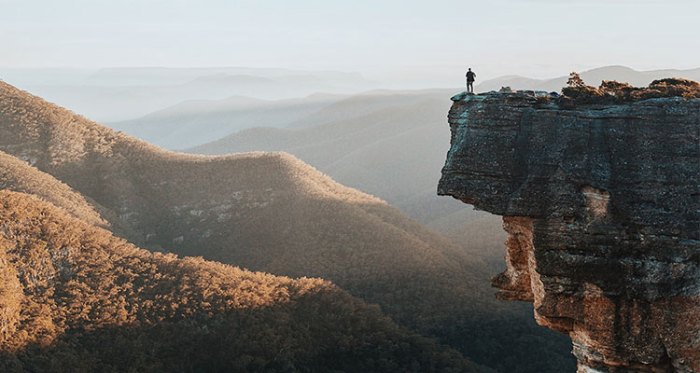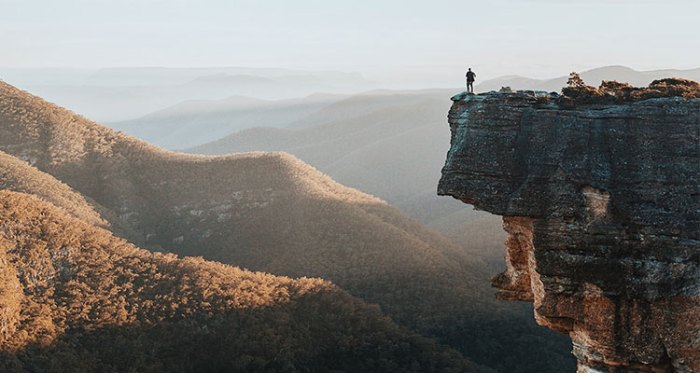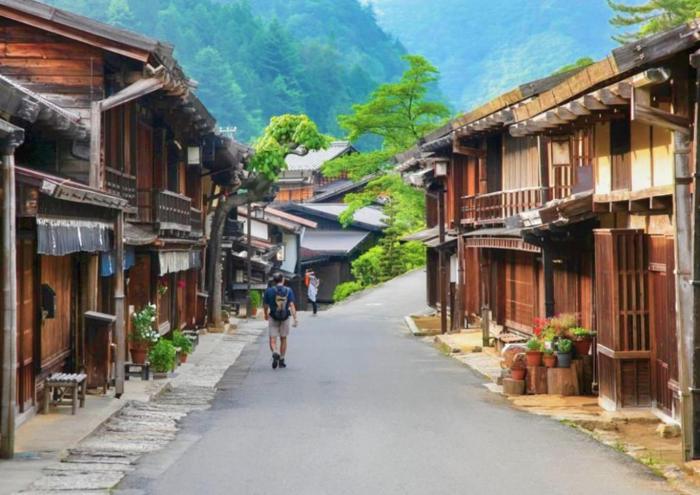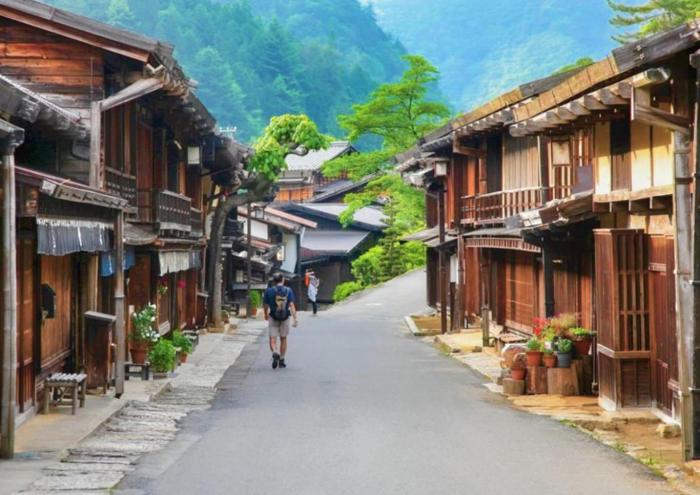Best coffee tours in Costa Rica offer a captivating journey through the heart of the country’s rich coffee culture. From the historic origins of coffee cultivation to the unique flavor profiles of Costa Rican beans, these tours provide a truly immersive experience. Discover the diverse landscapes and learn about the sustainable practices that shape this renowned coffee. You’ll explore the fascinating world of coffee farming, from the bean to the cup, and meet the passionate farmers who cultivate this exquisite brew.
This comprehensive guide dives deep into the various types of tours available, comparing guided and self-guided options. We’ll explore top operators, outlining their strengths and weaknesses, and help you plan your ideal Costa Rican coffee adventure. Learn about the essential considerations for planning your trip, including budget, time, and activities. We’ll also delve into the typical activities, from plantation visits to tasting sessions, providing a step-by-step guide to maximize your experience.
Finally, you’ll gain insights into choosing the right tour, finding reputable operators, and preparing for your journey, ensuring a memorable and enriching coffee tour.
Introduction to Costa Rican Coffee
Costa Rica, a nation renowned for its lush landscapes and biodiversity, also boasts a rich coffee heritage. The cultivation of coffee has deeply intertwined with the country’s history and identity, shaping its agricultural landscape and contributing significantly to its economy. This journey through Costa Rican coffee explores the fascinating history, unique characteristics, and the essential role of sustainable practices in shaping this globally recognized beverage.Coffee cultivation arrived in Costa Rica during the 19th century, initially brought by European settlers.
This introduction marked the beginning of a long-standing relationship with the bean, transforming coffee into a significant driver of the nation’s economic development. The climate, soil conditions, and dedication of Costa Rican farmers have culminated in the production of a coffee that is highly prized for its quality and flavor.
History of Coffee Cultivation
Coffee’s journey in Costa Rica began with small-scale plantations in the 19th century. The gradual expansion of cultivation transformed the country’s agricultural landscape, creating a network of coffee farms across various regions. The early years saw challenges in achieving consistent quality and international recognition. Over time, improvements in farming techniques, processing methods, and quality control led to the establishment of Costa Rican coffee as a premium product on the world market.
Unique Characteristics of Costa Rican Coffee Beans
Costa Rican coffee beans are known for their distinctive flavor profiles, largely attributed to the volcanic soil and unique microclimates found in various growing regions. The beans often exhibit a balanced acidity, a smooth body, and a rich, complex flavor that can range from fruity notes to nutty undertones. These characteristics result from the interplay of altitude, rainfall, and the specific cultivation methods employed by local farmers.
Coffee Growing Regions and Their Qualities
Costa Rica is divided into several distinct coffee-growing regions, each with its own unique characteristics influencing the flavor profile of the beans. The higher altitudes contribute to a more acidic and delicate flavor, while lower altitudes tend to produce a bolder and more robust cup. For instance, the Tarrazú region is renowned for its smooth, fruity notes, while the Heredia region is appreciated for its rich, complex flavor.
- Tarrazú: Known for its smooth, fruity notes, often with hints of citrus or berries. The high altitude and volcanic soil contribute to a delicate acidity and a well-balanced flavor.
- Heredia: This region produces a rich, complex coffee with hints of chocolate and caramel. The specific terroir contributes to a more robust flavor and body.
- Pacuare: The Pacuare region, nestled in the rainforest, yields a unique, full-bodied coffee. The distinct terroir often produces a coffee with chocolate and nutty undertones.
These variations highlight the nuanced nature of Costa Rican coffee and the influence of geographical location on the final product.
Significance of Sustainable Practices
Sustainability plays a vital role in Costa Rican coffee production. Farmers are increasingly adopting sustainable practices to maintain the long-term health of the land and the coffee plants. These practices not only benefit the environment but also ensure the quality and consistency of the coffee over time. Organic farming and water conservation are crucial elements in maintaining the integrity of the coffee ecosystem.
“Sustainable coffee production ensures not only the continued quality of the product but also the preservation of the environment and the livelihood of the coffee farmers.”
Typical Coffee Farm Experience
A typical coffee farm tour often includes a guided exploration of the farm’s operations. Visitors can observe the process from bean to cup, witnessing firsthand the meticulous work involved in coffee cultivation, processing, and preparation. This often includes demonstrations of the traditional methods employed by the farmers.
Types of Coffee Tours

Costa Rica’s coffee plantations offer a diverse range of tours, catering to various interests and budgets. From immersive farm-to-cup experiences to more casual guided tours, you can tailor your coffee adventure to your preferences. Choosing the right tour ensures a fulfilling and memorable experience, allowing you to delve into the intricate world of Costa Rican coffee.The variety of coffee tours available in Costa Rica allows visitors to engage with the coffee industry in different ways.
Understanding the nuances of each type will help you choose the best fit for your trip. Whether you’re seeking a hands-on learning experience or a relaxed overview of the process, there’s a tour designed for you.
Guided Coffee Tours
Guided tours are a popular choice for visitors seeking a structured learning experience. These tours often involve a knowledgeable guide who leads you through the coffee growing process, from bean to cup. They typically include visits to different stages of the coffee production cycle, from the farm to the processing facility, and a final coffee tasting session.
Self-Guided Coffee Tours, Best coffee tours in costa rica
Self-guided tours provide a more independent approach to exploring coffee farms. These tours usually involve pre-arranged visits to multiple farms or plantations, often with the assistance of a map or online resources. This option is perfect for travelers who prefer a more flexible itinerary and like to explore at their own pace. Often, a pre-packaged set of instructions and materials are provided to ensure a smooth and enriching experience.
Farm-to-Cup Experiences
Farm-to-cup experiences provide an immersive and comprehensive view of the entire coffee journey. These tours go beyond simply observing the process; they offer opportunities to actively participate in different stages of coffee cultivation, from harvesting to roasting and brewing. This allows a deeper appreciation of the effort and care involved in producing quality coffee. These experiences are typically more time-consuming and intensive, usually lasting a full day or more.
Table of Coffee Tour Features
| Tour Type | Region Visited | Activities Offered | Price Range (USD) |
|---|---|---|---|
| Guided Tours | Central and Tarrazu regions, often smaller family-run farms | Farm visit, processing facility tour, coffee tasting, short workshops on coffee making | $30-$80 |
| Self-Guided Tours | Various regions, including more remote farms | Pre-arranged visits to multiple farms, independent exploration, access to resources and maps | $40-$120 (depending on number of farms visited) |
| Farm-to-Cup Experiences | Usually focused on a single farm, or a small group of farms | Hands-on participation in harvesting, processing, roasting, brewing, and tasting; possible overnight stay | $100-$250+ |
Top Coffee Tour Operators: Best Coffee Tours In Costa Rica
Costa Rica’s coffee industry boasts a wealth of experience and expertise, and numerous tour operators offer captivating journeys through the world of coffee cultivation. Choosing the right operator can significantly enhance your experience, ensuring you gain a deeper understanding of the process and appreciate the quality of the beans. This section dives into some of the most reputable operators, highlighting their strengths, weaknesses, and the unique offerings of their tours.
Reputable Coffee Tour Operators
Several operators stand out for their dedication to providing comprehensive and engaging experiences. Their diverse offerings cater to different interests and budgets, ensuring there’s a perfect fit for every coffee enthusiast. These operators often combine educational components with scenic landscapes and cultural immersion.
- Eco-Friendly Coffee Tours: This company emphasizes sustainable practices throughout their operations, focusing on ethical sourcing and responsible environmental impact. Their tours typically include visits to small-scale farms, showcasing the dedication to organic methods and fair trade practices. A strength is their commitment to environmental sustainability. However, the tours might be less extensive compared to larger operators, focusing more on a smaller, personalized experience.
Customer feedback often praises the intimate nature of the tours and the emphasis on ethical sourcing. Tour packages usually include farm visits, tasting sessions, and a chance to meet the farmers.
- Costa Rican Coffee Adventures: Known for their extensive network of partner farms, this company provides a wide range of tour options, from basic introductory tours to more specialized excursions for coffee connoisseurs. Their strength lies in their diverse offerings and the extensive selection of farms they collaborate with. However, the sheer volume of tours might mean a less personalized experience for individual travelers.
Customer feedback generally highlights the variety of tour options and the overall value for the price, with some mentioning the potential for crowds in popular tours.
- The Coffee Route: This operator prioritizes providing a complete understanding of the entire coffee production process. Their tours often include visits to all stages, from the bean’s growth to the final roasting. A strength is their focus on providing a comprehensive perspective. Potential drawbacks might be a slower pace, as the tours tend to cover many steps in detail.
Customer feedback often commends the in-depth knowledge and the effort to demonstrate the entire process, but some may find the length of the tour overwhelming. The tour packages typically include farm visits, cupping sessions, and opportunities to interact with local communities.
Tour Package Comparison
Different operators offer various packages, and a comparison can aid in choosing the right one. The key is to consider the included activities and how they align with your interests. Factors to look for include the number of farms visited, the duration of the tour, and the opportunities for tasting and interaction with local farmers.
| Tour Operator | Contact Information | Tour Options | Customer Ratings (average) |
|---|---|---|---|
| Eco-Friendly Coffee Tours | (example) [email protected] | Basic, Intermediate, Advanced | 4.5 stars |
| Costa Rican Coffee Adventures | (example) [email protected] | Standard, Premium, Deluxe | 4.2 stars |
| The Coffee Route | (example) [email protected] | Full-Process, Specialty, Organic | 4.7 stars |
Planning a Coffee Tour
Embarking on a Costa Rican coffee tour is more than just a trip; it’s an immersive journey into the heart of the nation’s rich agricultural heritage. From the moment you decide to explore the world of coffee cultivation to the final sip of a perfectly brewed cup, careful planning ensures a memorable and enriching experience. This guide will walk you through the essential steps of organizing your coffee adventure.Planning a coffee tour requires meticulous consideration of your interests, budget, and travel style.
The diverse range of tours caters to various preferences, from a relaxed afternoon to an intensive hands-on experience. This detailed guide ensures you select the ideal tour that aligns with your specific needs.
Factors to Consider When Choosing a Tour Operator
Selecting the right tour operator is crucial for a positive experience. Several factors need to be carefully evaluated, including budget, interests, and travel style.
- Budget: Costa Rican coffee tours vary significantly in price. Some tours focus on a simpler, more basic experience, while others include luxury accommodations and premium coffee tasting. Define your budget parameters beforehand to narrow down your options. For example, a budget-conscious traveler might choose a tour emphasizing a tour of the plantation and a small tasting, while a traveler seeking a premium experience might opt for a tour including lodging, high-quality coffee samples, and a cooking class.
- Interests: Do you prefer a quick tour highlighting the coffee production process or a more extensive tour delving into the history and culture of coffee cultivation? Consider your interests in coffee, nature, or local culture when selecting a tour. For instance, if you are interested in the environmental impact of coffee production, a tour focusing on sustainable practices would be a suitable choice.
- Travel Style: Are you a solo traveler, a couple, or part of a larger group? Some tours cater specifically to solo travelers, while others are designed for families or couples. Consider your travel companions and preferences for a harmonious tour experience. For example, a family-friendly tour might include kid-friendly activities or a picnic lunch, while a solo traveler might prefer a tour focused on personalized interaction and knowledge sharing.
Researching and Booking a Coffee Tour Online
Online research is essential for finding the perfect coffee tour. Websites dedicated to tourism in Costa Rica and coffee-specific tour providers offer comprehensive information.
- Identify Potential Operators: Start by browsing reputable online travel agencies, tour operator websites, and Costa Rican tourism boards. Look for detailed descriptions of the tours, including specific activities, duration, and inclusions.
- Compare Tour Options: Carefully review the available tours, comparing prices, tour itineraries, and amenities offered. Read reviews from previous participants to gauge the quality of service and the overall experience. Comparing multiple tour options allows you to make informed decisions based on price, amenities, and other factors. For example, you might compare a tour focusing on a specific region of Costa Rica with one emphasizing a specific coffee type, considering your interests and preferences.
Costa Rica’s best coffee tours are amazing, offering incredible experiences with the bean from farm to cup. However, if you’re looking for a different kind of adventure, exploring traditional Japan, like the trip ideas Iori Takayama Japan Traditional trip ideas iori takayama japan traditional , might be just the ticket. Ultimately, though, Costa Rica’s coffee tours still top my list for a unique travel experience.
- Book Your Tour: Once you’ve chosen a tour, make your booking online. Confirm the tour details, including the date, time, and number of participants. Pay attention to any necessary pre-tour communications or information that the tour operator provides.
Packing Essentials for a Coffee Tour
Proper packing ensures a comfortable and enjoyable experience. A well-prepared bag will help you navigate the journey smoothly.
- Comfortable Walking Shoes: Many tours involve walking on uneven terrain. Comfortable shoes are essential for a comfortable and enjoyable experience.
- Sunscreen, Hat, and Sunglasses: Costa Rica’s sun can be intense, especially during the day. Protect yourself from the sun with sunscreen, a hat, and sunglasses. For example, a light-colored, breathable hat can provide much-needed shade.
- Rain Gear: Weather in Costa Rica can be unpredictable. Pack a light raincoat or poncho to protect yourself from any unexpected showers. Rain gear will help you stay comfortable and dry, regardless of weather conditions.
- Reusable Water Bottle: Staying hydrated is important. Bring a reusable water bottle to refill throughout the day.
- Snacks and a Small Backpack: Pack some light snacks and a small backpack to keep your belongings organized. A small backpack will help keep your belongings close and accessible.
Maximizing Your Coffee Tour Experience
Making the most of your coffee tour involves preparation and active participation.
- Engage with the Tour Guides: Ask questions and actively participate in the tour. Guides are usually knowledgeable and can provide insights into the coffee-growing process and the local culture. Engage with the tour guides and ask them about their experiences and insights.
- Be Open to New Experiences: Embrace the opportunity to learn about coffee and the local culture. Taste different types of coffee and interact with local farmers.
- Respect the Environment and Local Culture: Be mindful of the local environment and culture. Respect the farmers and their practices, and follow the tour operator’s instructions. Show respect for the environment and the local culture.
Coffee Tour Activities
Costa Rican coffee tours offer a captivating immersion into the world of this beloved beverage, from bean to cup. Beyond the theoretical aspects of coffee cultivation, these tours provide hands-on experiences that deepen understanding and appreciation. Participants gain a profound connection with the local culture and the intricate process that transforms raw beans into a delicious brew.
Typical Activities on a Coffee Tour
Coffee tours often include a diverse range of activities that combine education, exploration, and engagement. These tours typically involve a combination of visits to coffee farms, hands-on learning, and sensory experiences, creating a holistic understanding of coffee production.
- Visits to Coffee Plantations: A crucial part of any coffee tour is the opportunity to visit a working coffee plantation. This allows participants to see firsthand the meticulous care and labor that goes into growing and harvesting the beans. Witnessing the entire process, from the coffee trees’ nurturing to the final product, provides a rich context for appreciating the quality of the final cup.
- Meeting Local Farmers: Connecting with the local farmers is a cornerstone of a meaningful coffee tour. Farmers often share their knowledge and experience, offering insights into their daily challenges and triumphs. This personal interaction fosters a sense of community and respect for the hard work that goes into coffee production. Learning about their families’ involvement and the sustainability practices they implement further deepens the appreciation.
Costa Rica’s coffee tours are amazing, offering a unique taste of the country’s culture and incredible farms. Thinking about a relaxing getaway? Consider pairing your coffee tour with an all-inclusive resort experience in the Turks and Caicos, like hotels resorts all inclusive resorts turks caicos all inclusive. Afterward, you can revisit those amazing coffee farms with newfound appreciation.
The perfect blend of adventure and relaxation!
- Coffee-Making Process Education: Understanding the stages of coffee production, from the initial planting and cultivation to processing and eventual roasting, is essential for appreciating the final product. A comprehensive tour often includes explanations of different cultivation methods, processing techniques, and the importance of environmental sustainability in coffee production. This knowledge is essential to appreciate the nuances of the coffee’s flavor profile.
- Coffee Tasting Sessions: The culmination of a coffee tour is often a tasting session. These sessions allow participants to experience the diverse flavors and aromas of different coffee types and varieties. Tour guides frequently explain the characteristics of each bean, highlighting the role of factors like altitude, soil type, and processing methods in influencing the taste. Tasting notes are often provided to enhance the experience.
The tour often includes different brewing methods, allowing for a deeper understanding of how the same beans can produce different tastes.
- Coffee Roasting Demonstrations: Witnessing a coffee roasting demonstration provides a valuable insight into the transformation of green beans into aromatic and flavorful roasted beans. Participants often observe the different stages of the roasting process, learning about the impact of temperature and time on the bean’s final characteristics. This hands-on experience can reveal how roasting techniques can drastically affect the taste and aroma of the finished coffee.
Significance of Learning the Coffee-Making Process
A deep understanding of the coffee-making process goes beyond simply appreciating the final product. It allows for a richer connection with the culture and the dedication behind each cup. Learning about the diverse factors affecting coffee cultivation fosters appreciation for the artistry and expertise involved.
Visiting a Coffee Plantation and Meeting Local Farmers
Visiting a coffee plantation and meeting the local farmers is a truly enriching experience. This is where the human element of coffee production shines through. It allows participants to understand the dedication, hard work, and often the family traditions that underpin coffee production. The farmers themselves are the heart of the process, and interacting with them brings a personal dimension to the experience.
They can explain the intricacies of their craft, sharing the challenges and rewards of cultivating this beloved beverage. For instance, farmers often detail the importance of maintaining sustainable practices, emphasizing the long-term viability of their farms and the surrounding ecosystem.
Participating in a Coffee Tasting Session
Coffee tasting sessions are a crucial part of a coffee tour. The experience is more than just tasting; it’s about recognizing the nuances in flavor profiles. Participants are often guided through the tasting process, learning to identify specific characteristics like acidity, body, and aftertaste. Detailed tasting notes, which frequently incorporate descriptive words and phrases, are commonly used to improve participants’ ability to distinguish different coffee types.
It’s an opportunity to appreciate the artistry behind creating a flavorful and aromatic cup. For example, a well-trained guide can help distinguish between the fruity notes of a particular variety and the earthy undertones of another.
Coffee Roasting Demonstration
Coffee roasting demonstrations provide a dynamic view of how green beans transform into the roasted beans we know and love. The process, often displayed in a controlled environment, showcases the intricate science and art behind roasting. Observations of the changing colors, aromas, and sounds during roasting are critical to understanding the transformation of the bean. This practical demonstration often allows participants to learn about the nuances of different roasting levels and how they affect the final cup’s flavor profile.
For instance, a lighter roast often results in a brighter, more acidic flavor profile, while a darker roast may deliver a richer, more intense taste.
Essential Considerations
Choosing the perfect Costa Rican coffee tour involves more than just picking a date. Careful planning ensures you get the most out of your experience, from savoring the unique flavors to immersing yourself in the culture. This section dives into crucial factors to consider, helping you select a tour that aligns with your preferences and maximizes your enjoyment.Thorough research and a thoughtful approach are key to making the most of your coffee adventure.
Consider your budget, available time, desired level of activity, and the specific aspects of the coffee-growing process that pique your interest. Finding reputable operators and preparing adequately will significantly contribute to a smooth and rewarding experience.
Budgeting for Your Coffee Tour
Budgeting plays a significant role in selecting the right tour. Different operators offer various packages catering to diverse price points. Luxury tours often include accommodations, gourmet meals, and premium coffee tastings, while more budget-friendly options focus on the core experience of visiting a farm and learning about the coffee process. Consider your financial limitations and priorities to choose a tour that fits your budget without compromising the quality of the experience.
Time Constraints and Tour Duration
Time constraints are another critical consideration. Day trips are excellent for experiencing the basics, while multi-day tours offer a deeper immersion, allowing more time for learning about the entire coffee process, from bean to cup. Factor in travel time to and from the coffee farm, and the duration of the activities. Choose a tour duration that aligns with your available time and desired level of engagement.
Desired Level of Activity
Coffee tours offer a spectrum of activity levels. Some focus primarily on education, while others incorporate more physically demanding activities like hiking through coffee plantations. If you prefer a more relaxed pace, opt for a tour that emphasizes learning and tasting. If you enjoy adventure, select a tour with more active components. Consider your physical capabilities and preferences when making your selection.
Finding Reliable Tour Operators
Selecting a reputable tour operator is paramount. Look for companies with positive reviews and testimonials from previous clients. Check their experience and expertise in coffee tourism. Verify their commitment to sustainability and ethical practices. Look for certifications or affiliations with reputable organizations in the tourism industry.
Ask for references from past clients and inquire about the operator’s safety protocols.
Preparing for Your Coffee Tour
Proper preparation enhances the overall experience. A well-prepared traveler is a more engaged traveler. A comprehensive packing list is essential, including comfortable walking shoes, layers of clothing to adapt to varying weather conditions, and rain gear. Consider packing light, durable clothing that can withstand the conditions you might encounter. Pack comfortable walking shoes, sunscreen, insect repellent, and a reusable water bottle.
Maximizing Your Coffee Tour Experience
Engage fully with the local culture and coffee process. Ask questions, participate actively in the farm tours, and try various coffee types. Engage with the farmers and learn about their experiences and the challenges they face. Be respectful of the local customs and environment. Take detailed notes and pictures to capture the memories of your journey.
Potential Challenges and Solutions
Unexpected circumstances can sometimes arise during a coffee tour. Be prepared for potential delays, weather changes, or unforeseen circumstances. Always have backup plans in place and communicate with your tour operator about any concerns or issues. Contact the tour operator if you encounter any problems or issues. Have a backup plan for unforeseen situations, such as contacting the operator or local authorities.
Packing List
- Comfortable walking shoes
- Layers of clothing (for varying weather conditions)
- Rain gear
- Sunscreen
- Insect repellent
- Reusable water bottle
- Camera or phone for capturing memories
- Small notebook and pen for taking notes
Coffee Tour Experiences (Examples)

Embarking on a Costa Rican coffee tour is more than just sampling exquisite brews; it’s an immersive journey into the heart of the coffee-growing region. These experiences allow you to connect with the passionate farmers, understand the intricate process from bean to cup, and appreciate the dedication behind each perfectly roasted coffee. This section provides detailed examples of different coffee tour experiences, catering to various interests and experience levels.Experiencing the full spectrum of a coffee plantation involves much more than just a tasting.
It involves immersing yourself in the local culture, understanding the environment, and connecting with the people who cultivate these remarkable beans. Each tour offers a unique perspective on the journey of coffee, from the initial planting to the final cup.
A Day Trip to a Talamanca Coffee Plantation
This tour, led by “The Costa Rican Coffee Trail,” focuses on a small-scale, family-run plantation in the Talamanca region. The experience is designed for a beginner-to-intermediate coffee enthusiast.
- Morning: The tour begins with a pickup from your accommodation, followed by a scenic drive through lush landscapes. The drive itself provides insights into the region’s beauty and the challenges faced by local farmers.
- Mid-morning: Arrival at the plantation, where you’ll meet the family and receive a detailed explanation of their coffee-growing practices, emphasizing organic methods and sustainable farming. You’ll learn about the different stages of coffee production, from the initial planting to the final processing.
- Afternoon: Observe the coffee processing from cherry to bean. You’ll participate in a hands-on activity, like bean sorting or washing. This active participation allows you to experience the practical aspects of coffee production.
- Late Afternoon: A guided tasting session featuring various stages of roasting and brewing methods. This session provides valuable insight into the nuanced flavors and aromas that develop throughout the process. A delicious lunch prepared with local ingredients is included.
- Evening: Return to your accommodation, reflecting on the day’s enriching experience.
This tour typically costs around $150-$200 USD per person, including transportation, guided tours, and a delicious lunch. The experience focuses on the practical aspects of coffee cultivation and allows you to appreciate the hard work of the local farmers.
A Specialized Culinary Coffee Tour
This specialized tour, run by “Adventure Coffee Journeys,” focuses on the relationship between coffee and local cuisine.
Costa Rica’s best coffee tours are a must-do, offering a unique taste of the country’s rich culture and stunning landscapes. While exploring the coffee plantations, you might also consider adding a trip to Yerevan, a captivating city with incredible historical sites and bustling markets. For a deeper dive into the top things to do in Yerevan, check out this fantastic guide: top things to do in yerevan.
Ultimately, though, the best coffee tours in Costa Rica remain a top priority for any traveler seeking a memorable experience.
- Full Day: A comprehensive tour, encompassing coffee production, culinary demonstrations, and a tasting experience paired with local dishes. This tour goes beyond the standard coffee-tasting experience, focusing on the synergy between coffee and food.
- Morning: Visit a local farm, where you learn about coffee cultivation and processing. This is followed by a hands-on workshop on preparing traditional Costa Rican dishes.
- Afternoon: The tour guides will demonstrate the use of coffee in local cuisine, showing you how the flavor profiles of different coffee types enhance the taste of specific dishes. You’ll participate in a cooking class, preparing meals using coffee-infused ingredients. This experience focuses on the cultural context of coffee.
- Evening: A celebratory meal prepared using locally sourced ingredients, paired with a curated selection of coffee beverages. This allows for a deeper appreciation of the unique flavor combinations of the region.
This tour is generally priced between $250-$350 USD, including all activities, meals, and transportation. It offers a more holistic and culinary-focused approach to experiencing Costa Rican coffee.
Beginner vs. Experienced Coffee Enthusiast
A beginner can focus on a simpler tour with a detailed explanation of the coffee process, hands-on activities, and a guided tasting experience. An experienced enthusiast can choose a tour focusing on specific coffee varietals, roasting techniques, and advanced brewing methods. Advanced tours might include a visit to a local roastery, a deeper dive into organic farming, or a tasting competition.
Unique Coffee Tour Experiences
- Hiking Tours: Combine your coffee adventure with a hike through the mountainous coffee regions, offering stunning views and a deeper understanding of the environment. These tours often combine hiking trails with visits to plantations, offering a unique perspective.
- Culinary Experiences: Explore the connection between coffee and local cuisine. These tours often involve cooking classes, tasting sessions paired with regional dishes, and visits to local markets, offering a holistic experience.
Visual Representation of Coffee Tours
Costa Rican coffee tours offer a captivating journey into the heart of this agricultural paradise. Beyond the tasting, the visual experience of the plantations, the beans, and the process itself is crucial to appreciating the artistry behind each cup. This section will showcase the beauty and variety of these experiences through imagery and detailed descriptions.Coffee plantations in Costa Rica boast stunning landscapes, often nestled within lush, volcanic valleys.
These visually appealing environments are integral to the coffee’s flavor profile, as the terroir significantly influences the bean’s characteristics.
Coffee Plantation Landscapes
Costa Rican coffee plantations offer diverse visual experiences, from the misty mountaintops of the Tarrazú region to the rolling hills of the Pacuare River valley. The rich biodiversity and stunning vistas are essential elements of the overall experience. Imagine emerald green coffee trees, intertwined with vibrant flora, against a backdrop of majestic mountains. These picturesque settings are often the perfect backdrop for a leisurely stroll through the plantation, observing the meticulous cultivation practices.
| Region | Image Description | Coffee Beans |
|---|---|---|
| Tarrazú | A misty mountain landscape, with rows of coffee trees descending a hillside. The air is thick with the aroma of ripening coffee cherries, and the surrounding vegetation is dense with tropical foliage. | Bourbon, Catuai, and Caturra, known for their complex flavor profiles and bright acidity. |
| Pacuare River Valley | Rolling hillsides covered with vibrant green coffee trees, bordered by the glistening Pacuare River. The lush vegetation and the river’s tranquil flow create a serene atmosphere. | Typica, and other traditional varieties. Often noted for their balanced flavors and smooth body. |
| Alajuela | A panoramic view of a coffee plantation, with rows of coffee trees stretching across a valley. The clear, crisp air and sunny weather are a stark contrast to the misty highlands. | Yellow Bourbon and other specialty varieties, exhibiting nuanced sweetness and complexity. |
Coffee Bean Cultivation and Characteristics
The process of cultivating coffee beans is a delicate dance between nature and human intervention. Different regions in Costa Rica offer distinct microclimates, resulting in unique characteristics for the beans grown there. Understanding these characteristics is essential to appreciating the nuances in the final cup of coffee.
- Bourbon: Known for its bright acidity and complex flavor profile, often described as fruity and floral. This variety thrives in the higher altitudes and cooler climates of Costa Rica.
- Caturra: A popular variety prized for its high yield and resistance to diseases. Often displaying a smooth body and a balanced flavor, Caturra coffee is enjoyed for its accessibility and versatility.
- Typica: A traditional variety often associated with a smooth, medium-bodied flavor. Its adaptability to different environments makes it a prevalent choice across the country.
The Coffee-Making Process: Bean to Cup
The journey from bean to cup is a testament to the dedication and skill involved in crafting a perfect cup of coffee.
- Harvesting: Coffee cherries are hand-picked at their peak ripeness, ensuring optimal flavor and quality. This meticulous process often involves expert knowledge of the tree and cherry stages.
- Processing: The cherries are processed using different methods, including wet and dry methods, each impacting the final cup’s flavor. The selection of the processing method is crucial to the final product.
- Drying: The processed coffee beans are carefully dried to control moisture content, a critical step in preserving quality and preventing spoilage.
- Grading and Sorting: Beans are sorted and graded based on size, shape, and quality to ensure consistency and meet specific standards.
- Roasting: The beans are roasted to achieve desired color, aroma, and flavor profiles. The roasting process impacts the final cup dramatically.
- Grinding and Brewing: Freshly roasted beans are ground and brewed using various methods, from drip coffee to pour-over, espresso, or French press. Each method brings out different aspects of the coffee’s character.
Savor Your Coffee
The way you savor your coffee is as important as the origin and preparation. Different brewing methods highlight different aspects of the coffee’s characteristics.
- Pour Over: This method allows for precise control over water temperature and brewing time, resulting in a clean, well-extracted cup. This method brings out the subtleties of the bean.
- French Press: The immersion method delivers a robust and full-bodied cup with a sediment layer, highlighting the body and richness of the coffee.
- Espresso: This method creates a concentrated, strong brew, best enjoyed in a small, elegant format. The quick brewing time allows for a concentrated and strong flavor.
Coffee Tour Operators
Numerous tour operators offer immersive coffee experiences in Costa Rica. Choosing the right one depends on your interests and budget.
- [Operator 1]: Offers a comprehensive experience, including visits to various plantations and a hands-on coffee-making workshop.
- [Operator 2]: Specializes in small-batch, artisan coffee tours, providing intimate interactions with local farmers and unique insights into sustainable practices.
- [Operator 3]: Focuses on educational coffee tours, providing in-depth knowledge of coffee cultivation, processing, and brewing.
Ultimate Conclusion
Embarking on a coffee tour in Costa Rica promises an unforgettable experience, connecting you with the passion and artistry behind this beloved beverage. From understanding the intricate coffee-making process to meeting the dedicated farmers, your journey will be enriched by the knowledge and appreciation you gain. This guide provides the essential tools to plan a remarkable coffee adventure, allowing you to immerse yourself in the vibrant culture and exquisite flavors of Costa Rican coffee.
We hope this exploration inspires you to book your own unforgettable coffee tour!




























